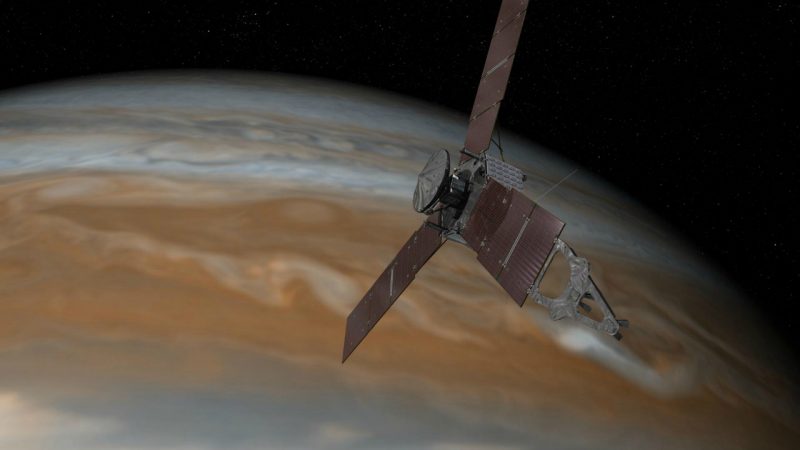
Today (August 27, 2016) at 8:51 a.m. EDT (12:51 UTC) NASA’s Juno spacecraft will get closer to the cloud tops of planet Jupiter than at any other time during its prime mission.
How close? According to a NASA statement:
At the moment of closest approach, Juno will be about 2,500 miles (4,200 km) above Jupiter’s swirling clouds and traveling at 130,000 mph (208,000 km per hour) with respect to the planet.
Today’s flyby will be the first time Juno will have its entire suite of Juno’s science instruments will be activated. Scott Bolton is principal investigator of Juno from the Southwest Research Institute in San Antonio. Bolton said in a statement:
This is the first time we will be close to Jupiter since we entered orbit on July 4. Back then we turned all our instruments off to focus on the rocket burn to get Juno into orbit around Jupiter. Since then, we have checked Juno from stem to stern and back again. We still have more testing to do, but we are confident that everything is working great, so for this upcoming flyby Juno’s eyes and ears, our science instruments, will all be open.
This is our first opportunity to really take a close-up look at the king of our solar system and begin to figure out how he works.

Not only will Juno’s suite of eight science instruments be on, the spacecraft’s imager – JunoCam – will be snapping closeups. NASA expects to release some of these images – including the first glimpse of Jupiter’s north and south poles – during the later part of next week. Although the science data from the pass should be downlinked to Earth within days, interpretation and first results are not expected for some time, NASA said.
Juno launched five years ago August 5, 2011. No other spacecraft has ever orbited Jupiter this closely. There are 35 more close flybys of Jupiter scheduled during its prime mission, scheduled to end in February 2018.
Enjoying EarthSky? Sign up for our free daily newsletter today!
Bottom line: On August 27, 2016, NASA’s Juno spacecraft will get closer to the cloud tops of planet Jupiter than at any other time during its prime mission.











